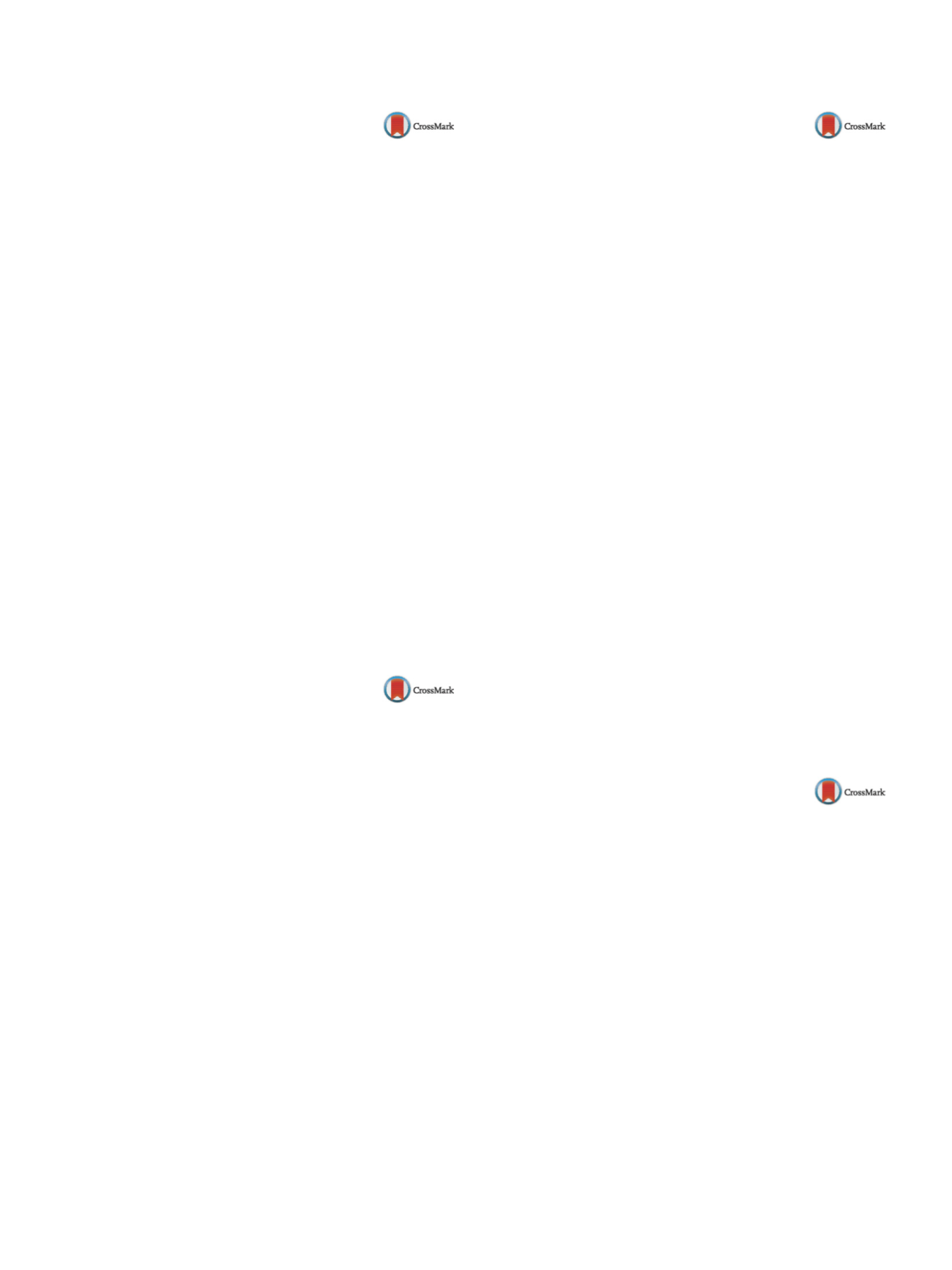

S436
25th European Congress of Psychiatry / European Psychiatry 41S (2017) S405–S464
EV0099
Adolescence and self-injuries
A. Dörr
∗
, S. Viani , Q. Yamil
Faculty of Medicine, Universidad de Chile, Psiquiatría y Salud Mental
Oriente, Santiago, Chile
∗
Corresponding author.
This article is a reflection on the current affairs and an invitation
to think about worrying phenomena in youngsters: self-injuries or
cuts in the arms in eight young adolescent patients. We try to figure
out the underlying cause of such behavior, which is more common
every day and reveals some characteristics of society. Sociocul-
tural, individual and family changes are analyzed, showing possible
connections among these instances, identity and self-injuries. We
suggest that the difficulties in identity development may be related
to practices such as self-injury or others, which are related to men-
talization problems. In the sociocultural level we find a way to
socialize in which subjective discomfort has increased, there is
overabundance, mass consumption, and the traditional social insti-
tutions (family, school and religion) have failed. Youngsters do not
know themselves nor their projects. This difficulty is accompanied
by an individual’s failure in mentalization capacities (name one’s
feelings), leading the suffering youngster to practices such as self-
injuries, which become permanent. Finally, the particulars of family
relationships are described: distance between parents and their
offspring, with the life experiences of the former being less appreci-
ated by their offspringwhile forming their own identity, this is, they
are responsible of becoming the architects of their own identities.
They are orphans without traditions, which are sources of identity
and innovation; to know who we are we must know where we
come from.
Disclosure of interest
The authors have not supplied their decla-
ration of competing interest.
http://dx.doi.org/10.1016/j.eurpsy.2017.01.428EV0100
Determining the influence of game
treatment on decreasing divorce
children’s’ stress
F. Ebrahimi
Islamic Azad University, Kermanshah Branch, Clinical Psychology,
Kermanshah, Iran
Introduction
One of themain challenges facing the fact that every
society has always called divorce. Phenomenon inmodern societies
is growing at a rapid rate and adverse effects of economic, social and
especially psychological, parents and children.
Aim
This study pays to determining the influence of game treat-
ment on decreasing divorce children’s’ stress.
Methods
The method of study is of testing in which statistical
society of study includes all children (girl and boy) of divorced par-
ents. From all statistical society, we have selected a sample about
26 persons by randomly sampling. The instrument for gathering
information in this study includes children stress test (SCARED) in
which has been studied sample after measuring its narration and
stability.
Result
The result of dependent
t
-test and covariance analysis
showed game treatment has meaningful and positive influence on
children stress.
Conclusions
The amount of its interference on decreasing divorce
children stress is about 83%. It means 83% of the whole remained
scores variance is related to game treatment interference.
Keywords
Game treatment; Children’s’; Stress
Disclosure of interest
The author has not supplied his declaration
of competing interest.
http://dx.doi.org/10.1016/j.eurpsy.2017.01.429EV0101
A validation study of the Mood and
Feelings Questionnaire, Danish
version
J. Eg Frøkjær
∗
, N. Bilenberg , R. Wesselhoeft
Institute of Clinical Research, University of Southern Denmark,
Department of Child, and Adolescent Psychiatry Odense, Odense C,
Denmark
∗
Corresponding author.
Introduction
The Mood and Feelings Questionnaire (MFQ) was
developed to measure depressive symptoms in children and ado-
lescents. It includes a child self-report part and a parent report on
child part. The MFQ has been validated and proven clinical useful
in several countries.
Objectives
To validate theMFQ in a population of Danish children
and adolescents.
Aims
There is a need of a standardized questionnaire for Danish
children and adolescents tapping into affective symptoms. Before
routine use the MFQ must have been validated in Denmark. This
study examines the validity of MFQ in Danish children and adoles-
cents.
Methods
The study included two samples of probands aged 8–18
years. A population-based sample of school children and their par-
ents, and a clinical sample including two subsamples:
– patients referred for Child and Adolescent Mental Health Services
with depressive symptoms;
– in-patients at the paediatric department of a University Hospital.
All included probands and their parents filled out the MFQ and the
clinical samples in addition answered the depression section of the
Beck Youth Inventories, andwere interviewed using the depression
part of “K-SADS-PL”.
Results
Preliminary results from both samples will be presented
at the EPA 2017 in Florence.
Conclusions
Depending on the results of this study, the MFQ
might be used as a screening instrument and as a clinical tool to
monitor depressive symptoms in Danish children and adolescents.
Disclosure of interest
The authors have not supplied their decla-
ration of competing interest.
http://dx.doi.org/10.1016/j.eurpsy.2017.01.430EV0102
Mind your anger habits: For teen
(group CBT for teens with anger
behavioral problems)
S. Eraky
Egyptian Association of Cognitive Behavior Therapy, Child and
Adolescent, Cairo, Egypt
Problematic anger behaviors of children and adolescents repre-
sent a significant challenge to the clinical community. Although
a number of direct and indirect factors are theorized to contribute
to the etiology of aggressive behavioral problems, the cognitive-
behavioral model focuses on the cognitive processes that play
a significant role in the generation of anger and the aggressive
responses to provocation. “Mind your anger habits: for teen” man-
ual, is based on the cognitive-behavioral conceptualization of anger
and anger management problems functions, it consists of 10 group
sessions for teens and 8 group sessions for their parents.
In the “Mind your anger habits: for teen”; anger is identified
as a stress reaction with three response components: cognitive,
physiological, and behavioral. The cognitive component is charac-
terized by one’s perception of social stimuli and provocation cues
in the social context, by one’s interpretation of these stimuli, by
one’s attributions concerning causality and/or responsibility, and
by one’s evaluation of oneself and the situation. This component
represents a significant area for intervention with aggressive ado-
lescents as their perceptions and attitudes serve to prompt most


















